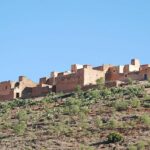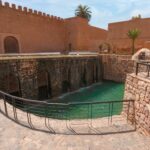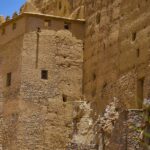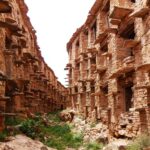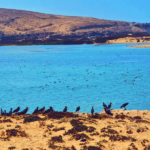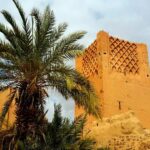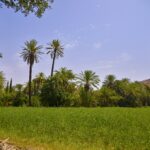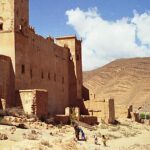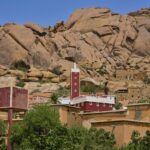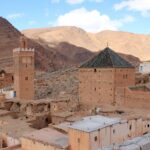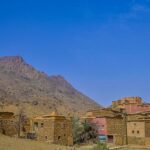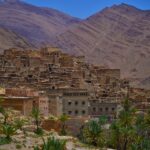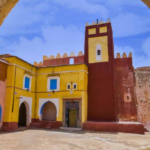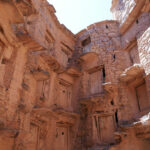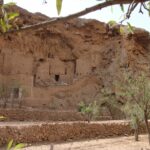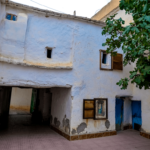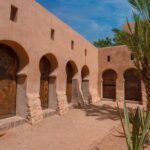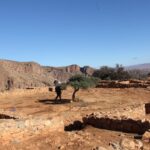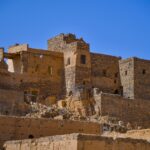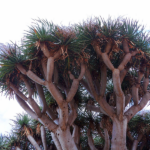The Dar Iligh Museum, which is located just 50 km from Tiznit in the western Anti-Atlas region, is a key cultural institution that portrays the character of the heritage of the Tazerwalt region and of the old Sudprincedom of Semlalie. The artifacts here are not only preserved but also the venue serves to educate guests about the area’s equally significant historical happenings and stories. It gives one of a kind opportunities to trace the way of the past civilizations through its well-placed exhibitions that range to old manuscripts and bridal armbands. Its position amongst the rocky landscapes makes it particularly attractive for the antiquarians and people who like to look at the ancient history and culture of Souss Massa, and it should be on their “must-visit” places.
The historical background
The story of Dar Ilighm started in 1626, with the emergence of Semlalie principality by Al Abou Hassoune As- Semlali, also called Boudmia. A descendant of Sidi Ahmed ou Moussa, who was admired for the mystical act, Boudmia found his seat at the Dar iligh during the time when the Saadian dynasty’s power over Morocco was decreasing and a number of small independent states came to being. Semlalie principality met its golden age, applying its influence to the huge area of southern Morocco with Sudan among others, as favorable locations in the caravans business.
Sultan Intervention
The history of Dar Iligh had a dramatic turn when Sultan of the Alawite Dynasty, Moulay Rachid started a unifying campaign to establish his rule over the whole Morocco in the last quarter of the 17th century. Following the submission of the Middle Atlas, the Sultan shifted his attention to the region of Souss and the Anti-Atlas. In 1670, he took over Dar ligh and hence was the final Boudmia Dynasty’s ruler. Currently, only a few walls that used to be the seat of power remind visitors about its bright past and the times of bloody fights that left their marks on the land.
A Cultural Beacon
The museum, covering the area of 2500 square meters, where visitors will have an opportunity to investigate a magnitude of collection of more than 3500 manuscripts and also over 5500 historical documents. Moreover, visitors will discover sultanic dahirs, official documents of the government (known as makhzen), and other archival sources that help to better understand the socio-political atmosphere of the period.
Sidi Ahmed Moussem
Dar Iligh is situated close to the village of Sidi Ahmed Ou Moussa named after the mystic Ahmed-Ou-Moussa Abou Al-Abbas Ahmed-Ou-Moussa Al Jazouli Al Semlali, a Cherifian descendant who is an ancestor of the Dar Iligh leader. After his martyrdom a mausoleum and zaouia were constructed for him, evolving into a world Popular spiritual center and Pilgrimage place. Every year, the biggest Moussem in Souss, both religious and commercial, is marked here, as the Souk and the diverse artistic and cultural performances, spiritual rituals and various ceremonies are held around it, accompanied by the tantalizing and thrilling atmosphere.
Why Visit Dar Iligh ?
Dar Iligh stands for more than a museum; it is a voyage in time by providing the viewers with a one of a kind occasion to discover a turbulent period of Moroccan history that underwent enormous change. Moreover, the formats and documents which remained untouched many years ago enable us to discover the life of the past. In addition, the Anti-Atlas region provides a beautiful background, such that a visit to Dar Iligh is not only informative but also magical.
Whether you are a history lover, a researcher or simply a curious tourist, Dar Iligh provides you with a remarkable knowledge of the Souss Massa heritage and the Semlalie principality which carried on its traditions up to the present day.
